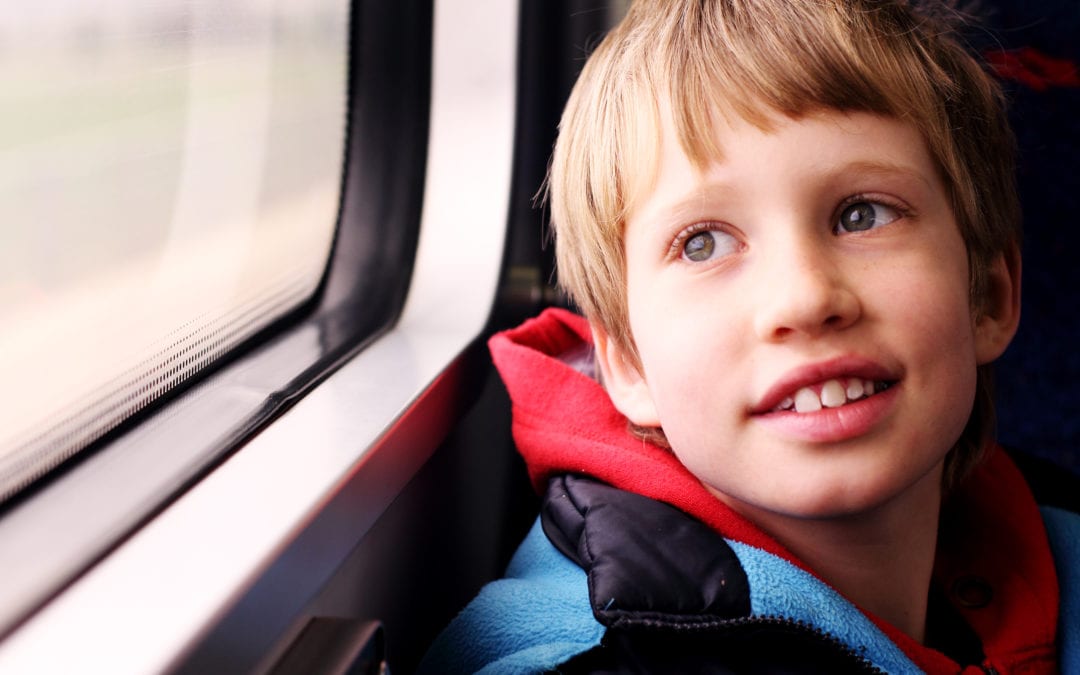April is Autism Awareness Month! As the number of children diagnosed with autism continues to rise, learning more about the disorder and raising awareness becomes increasingly important. Get started now by discovering more about autism and what you can do to get involved.
What is Autism?
Autism Spectrum Disorder (ASD) is a complex neurological and developmental disorder. It impacts a person’s verbal and non-verbal communication skills and social interactions. It typically appears before three years of age and is lifelong but non-progressive, so it doesn’t get worse as the person ages. Autism is a spectrum disorder; its characteristics and symptoms display in many combinations and range from mild to severe.
Autism Prevalence
Among developmental disorders, autism is the most common. Currently, about one child in every 68 births is diagnosed with autism, but the number of people with autism continues to grow. The disorder can affect any child and a person of any race, ethnicity, income level, lifestyle, educational level or social status. The prevalence is largely consistent around the world, but is higher in boys than girls.
Diagnosing Autism
A team of medical professionals diagnoses autism by observing the person’s behavior, communication and developmental levels. Individuals with autism may express some or all of the following characteristics at different levels:
- Delays in communication skills
- Nonverbal or limited verbal skills
- Use of gestures, pointing or leading by the hand to get a desired object
- Seems not to hear well at times, but hearing tests normally
- Uneven or low gross motor skills, like jumping or running
- Fine motor difficulties, like holding a pen
- Poor handwriting
- Intense preoccupation with objects
- Spinning of objects or self
- Sensory sensitivities
- Narrow, intense interests
- Tantrums
- Self-injurious behavior
- Little or no eye contact
- No fear of dangerous situations or strangers
- More likely to run away in a crowd
- Lack of understanding about how to play
- Difficulty forming friendships with peers
Range of Symptoms
Many of the above symptoms are severe, but remember that autism covers a broad spectrum. People sometimes believe that children with autism don’t make eye contact, talk, show affection or care about others. This is not true. Many children with autism do make eye contact and express other non-verbal forms of communication. They also usually develop functional language skills or some form of communication, like sign language. Because autism affects the person’s communication and interaction skills, they may seem less affectionate. However, they often care deeply about others and can learn to express that in their own ways. Remember that symptoms range from mild to severe and impact each person differently.
Growing with Autism
Another common misconception about autism is that it gets worse with age. Actually, the opposite is usually the case. The disorder itself is not degenerative, and people with autism tend to continuously improve as they learn to cope with the disorder. Many people with autism live successful lives, contributing to society. Receiving appropriate services as early as possible helps people with autism live life to their fullest potential.
Treatment for Autism
There isn’t a cure or a one-size-fits-all treatment plan for autism. Instead, treatment focuses on developing a program that works well for the specific child. A specialized, highly-structured education program designed to fit their needs is often the foundation of a treatment program. Other treatment options may include one or more of the following:
- Prescription medications
- Occupational therapy
- Speech therapy
- Sensory therapy
- Physical therapy
Importance of Early Intervention
Starting intervention as early as possible helps achieve positive outcomes. Early identification of autism gives families the opportunity to get the help their child needs. Because early intervention is so important, it’s helpful to know some early signs that may indicate autism. If your child displays the following behaviors, talk to their doctor about the possibility of autism:
- Lack of or delay in verbal communication skills
- Repetitive use of mannerisms
- Little to no eye contact
- Lack of make-believe play
- Intense fixation on objects
- Lack of interest in peer relationships
Supporting Families with Autism
Help support families dealing with autism and raise awareness about the disorder during April, Autism Awareness Month. Here are some of the ways you can show your support:
- Wear blue – Part of Autism Awareness Month is a designated Autism Awareness Day to kick off the beginning of the yearly “Light It Up Blue” campaign. This campaign encourages people to light up buildings, landmarks and more in blue to support individuals with autism. Wear blue to show your support on Autism Awareness Day and “light it up blue.”
- Share the puzzle – The Puzzle Ribbon is a commonly-recognized symbol of autism awareness, so show your support by sharing your ribbon.
- Donate – Autism research is an important part of making progress. Donate to a credible organization like Autism Speaks, the Autism Research Foundation or the Autism Society, to further continuing research and support.
- Walk – Join an autism walk to raise support and awareness.
- Spend time with someone with autism – Give someone with autism support by spending time with them. This is a great way to celebrate Autism Awareness Month and gives you a better understanding of the disorder.
- Be an advocate – Speak up and show your support of autism inclusion by contacting your local school board about providing opportunities for children with autism.
Autism is a difficult disorder, but together we can find ways to understand it better and help people suffering from it to live productive, healthy lives

